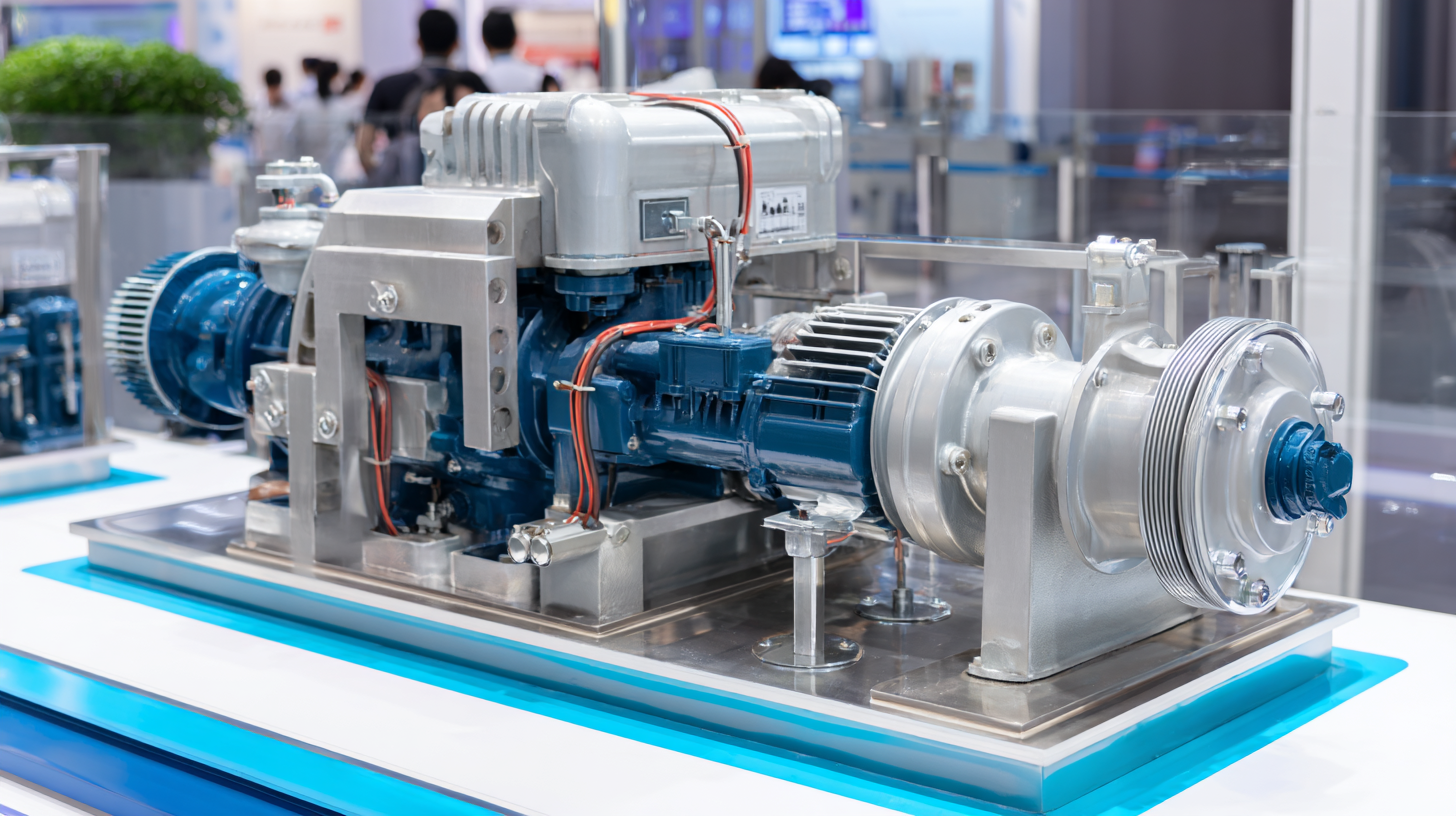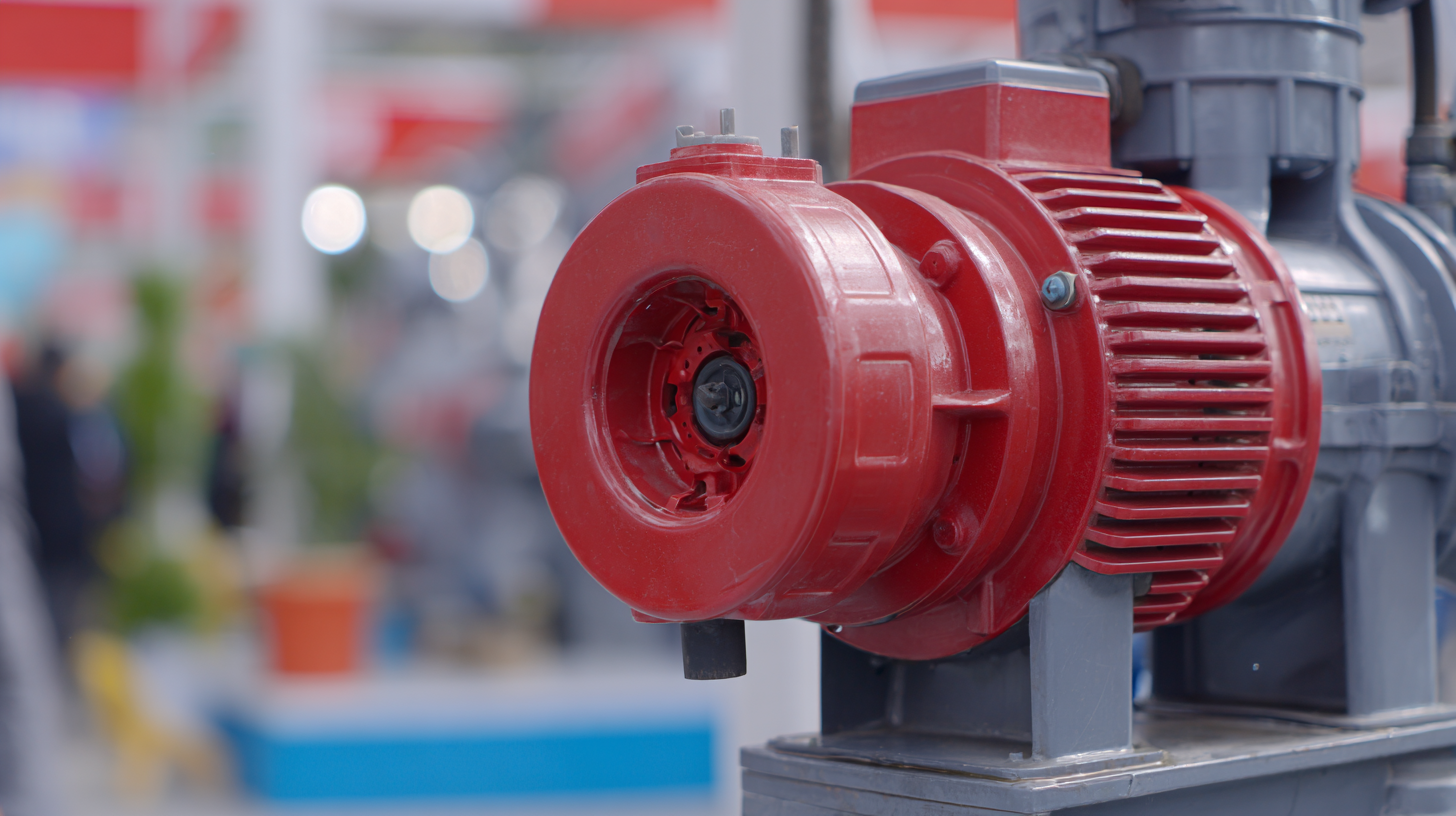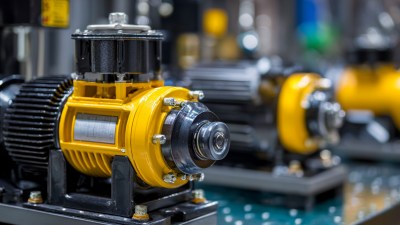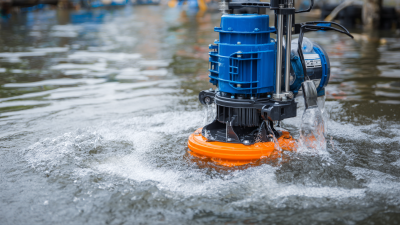Exploring Water Pump Innovations for Home Use at the 2025 China Import and Export Fair
As we approach the 2025 China Import and Export Fair, the focus on innovations in "water pump for home" systems is more pertinent than ever. According to a recent industry report by Grand View Research, the global market for home water pumps is expected to reach $6.7 billion by 2025, driven by increasing demand for efficient water supply solutions in residential settings. The rising awareness of water conservation and the need for reliable irrigation systems are further propelling advancements in this sector.
 Innovations such as smart pumps equipped with IoT technology enable users to monitor and control water usage in real-time, enhancing both convenience and efficiency. The exhibition will provide an opportunity for manufacturers and suppliers to showcase cutting-edge technologies, and for consumers to explore sustainable options that align with modern living standards. As we delve deeper into these advancements, it becomes clear that the evolution of water pumps is pivotal in addressing contemporary water management challenges at home.
Innovations such as smart pumps equipped with IoT technology enable users to monitor and control water usage in real-time, enhancing both convenience and efficiency. The exhibition will provide an opportunity for manufacturers and suppliers to showcase cutting-edge technologies, and for consumers to explore sustainable options that align with modern living standards. As we delve deeper into these advancements, it becomes clear that the evolution of water pumps is pivotal in addressing contemporary water management challenges at home.
Innovative Water Pump Designs Showcased at the 2025 China Import and Export Fair
As the 2025 China Import and Export Fair approaches, an exciting showcase of innovative water pump designs is set to highlight the advancements in home-use water management solutions. Recent reports indicate that China's focus on innovation has propelled it to the forefront of the advanced industries sector, particularly in technologies that improve everyday living. In fact, the country's investment in research and development has seen a marked increase, with over 2.4% of its GDP allocated to innovation-driven initiatives in 2023.
Among the latest trends in water pump technology are energy-efficient models that utilize smart sensors and automation. These innovative designs are not only reducing energy consumption but also enhancing user convenience through app-based controls. According to industry analysis, the global market for smart water pumps is expected to grow significantly, reaching approximately USD 2.5 billion by 2027, driven largely by the increasing demand for sustainable home solutions. The upcoming fair will provide a vital platform for emerging brands to present their cutting-edge water pump technologies and for industry professionals to explore collaborative opportunities.

Sustainable Water Solutions: Eco-Friendly Technologies in Home Water Pumps
Innovations in water pump technology are paving the way for sustainable solutions in home use, particularly as highlighted by the recent trends and advancements showcased at event platforms like the 2025 China Import and Export Fair. One significant area of development is the integration of smart water management systems with photovoltaic pumping technologies. This combination not only harnesses renewable energy to supply domestic water for rural communities but also enhances the overall sustainability of water resources.
Tips for choosing eco-friendly water pumps include evaluating the energy source, particularly looking for systems that utilize solar power or other renewable options. Additionally, consider pumps that use advanced filtration technologies, like those showcased at international trade events, which ensure clean and safe water while minimizing environmental impact. As the global emphasis on sustainability grows, exploring decentralized water systems can also greatly improve resilience and efficiency in water management, making it a valuable consideration for any homeowner.
Smart Water Pumps: Integration of IoT and Automation for Enhanced Efficiency
At the 2025 China Import and Export Fair, the spotlight will shine on smart water pumps that embody the latest advancements in IoT (Internet of Things) and automation. These innovative systems not only enhance the efficiency of water usage in homes but also offer unprecedented control over water management. By integrating sensors and smart technology, homeowners can monitor water levels, adjust flow rates, and even schedule irrigation through mobile applications, ensuring that every drop counts.

Tips: When considering upgrading to a smart water pump, evaluate the compatibility with your existing home automation system. Look for features such as real-time data analytics, notifications, and remote access capabilities. Investing in a model with energy-efficient technologies can also lead to significant savings on utility bills.
The utility of these devices extends beyond mere convenience. Automated water pumps contribute to water conservation efforts, helping to reduce waste. For families who prioritize sustainability, this innovative technology not only lowers utility costs but also aligns with eco-friendly practices. Homeowners are encouraged to familiarize themselves with the energy consumption metrics of potential models to select the most efficient solutions available.
Comparative Analysis of Traditional vs. Modern Water Pump Technologies
The home water pump market is witnessing significant changes, shifting from traditional methods to modern technologies. Traditional water pumps are often bulky and require manual operation, which can lead to inefficiencies and higher energy consumption. In contrast, modern water pumps utilize advanced engineering, offering features like smart controls, energy efficiency, and automatic operation, catering to the growing need for convenience and sustainability in home use.
As the market is projected to grow from $18.58 billion in 2024 to $26.92 billion by 2032 at a compound annual growth rate (CAGR) of 4.8%, homeowners are increasingly considering the innovations in water pump technologies. These modern systems not only reduce energy costs but also provide better water management. By integrating IoT technology, users can monitor and control their water systems remotely, enhancing the overall efficiency and effectiveness of water usage in homes.
**Tips**: When considering an upgrade, assess your specific water needs and usage patterns. Research pump efficiency ratings to ensure you select a model that balances power and resource conservation. Lastly, look for units that offer easy installation and maintenance options to maximize your investment in modern technology.
Exploring Water Pump Innovations for Home Use at the 2025 China Import and Export Fair
| Technology Type | Energy Efficiency (kW) | Flow Rate (L/min) | Noise Level (dB) | Lifespan (Years) | Maintenance Frequency (Months) |
|---|---|---|---|---|---|
| Traditional Electric Pump | 1.5 | 30 | 70 | 5 | 6 |
| Submersible Pump | 1.2 | 40 | 60 | 8 | 12 |
| Solar Pump | 0.5 | 25 | 50 | 10 | 24 |
| Smart Pump | 0.8 | 35 | 55 | 10 | 18 |
| Variable Frequency Drive Pump | 1.0 | 45 | 65 | 12 | 12 |
Market Trends: Future of Home Water Pump Industry in China and Beyond
The home water pump market in China is poised for significant growth, projected to reach a value of $18.58 billion in 2024 and expand to $26.92 billion by 2032, with a compound annual growth rate (CAGR) of 4.8%. This upward trajectory can be attributed to increasing urbanization and the rising demand for efficient water supply systems in households. As consumers prioritize convenience and sustainability, innovations in water pump technology are becoming essential.
In parallel, the domestic booster pump market is also experiencing robust development, estimated to grow from approximately $3.41 billion in 2024 to $7.12 billion by 2032, marking a CAGR of 9.64%. This growth highlights the evolving preferences for heightened water pressure solutions in residential settings.
**Tips:**
1. When considering a home water pump, assess the specific needs of your household, including water pressure requirements and supply levels.
2. Look for energy-efficient models to not only save on utilities but also contribute to a sustainable home environment.
3. Stay informed about the latest innovations and market trends to ensure you select a water pump that aligns with future advancements.


